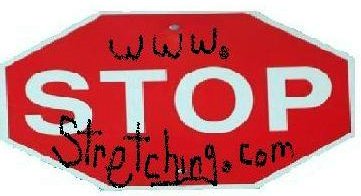|
GLOSSARYAgonist: A muscle that is contracting to create joint movement. Antagonist: A muscle that opposes the agonist, usually located on the opposite side of the joint. Autogenic Inhibition: A reflex muscular relaxation (weakness) that occurs in the same muscle where mechanoreceptors are stimulated. Biomechanics: A branch of study concerned with force, living structures and the effect of force on living structures. At StopStretching our interest is specifically with exercise mechanics. Gamma biasing: A principal used in neuromuscular rehabilitation, where through a controlled set of variables gamma neurons blah, blah blah if you really want to know we recommend the neurophysiology seminar offered by BIOCONSTRUCTS. Golgi Tendon Organ (GTO): An inhibitory mechanoreceptor located near the junction of the muscle and tendon. It is sensitive to increasing tension within the muscle. There is great irony that it shares its abbreviation with one of the greatest muscle cars of all time. Hypertrophy: An increase in size due to cellular enlargement. Inertia: the resistance an object has to a change in its state of motion. "An object at rest tends to stay at rest and an object in motion tends to stay in motion with the same speed and in the same direction unless acted upon by an unbalance force." - Newton's first law Inhibition: The interference with or prevention of a response despite the presents of appropriate stimulus. Mechanoreceptors: Cells that transduce mechanical stimuli and relay that information in the nervous system. Neuromuscular: Of, or relating to, nerves and the muscles they stimulate. Range of Motion: the distance within which a joint is able to move. Reciprocal Inhibition: A reflex where the antagonist relaxes so as not to impede agonist action. Reciprocal inhibition is an essential, automatic neurological function, designed to provide for optimal joint function. Reflex: An involuntary motor response to a sensory stimulus. Stretch receptors: Sensory cells that respond to increased tension in the surrounding tissues. There are different types of stretch receptors with different properties. Some respond to the amplitude of tension; others respond to the rate at which tension increases. Stretch reflex: (also known as Myotatic Reflex and Deep Tendon Reflex)An involuntary contraction of a muscle in response to increased tension. Weakness: Mild degree of paralysis!
|

